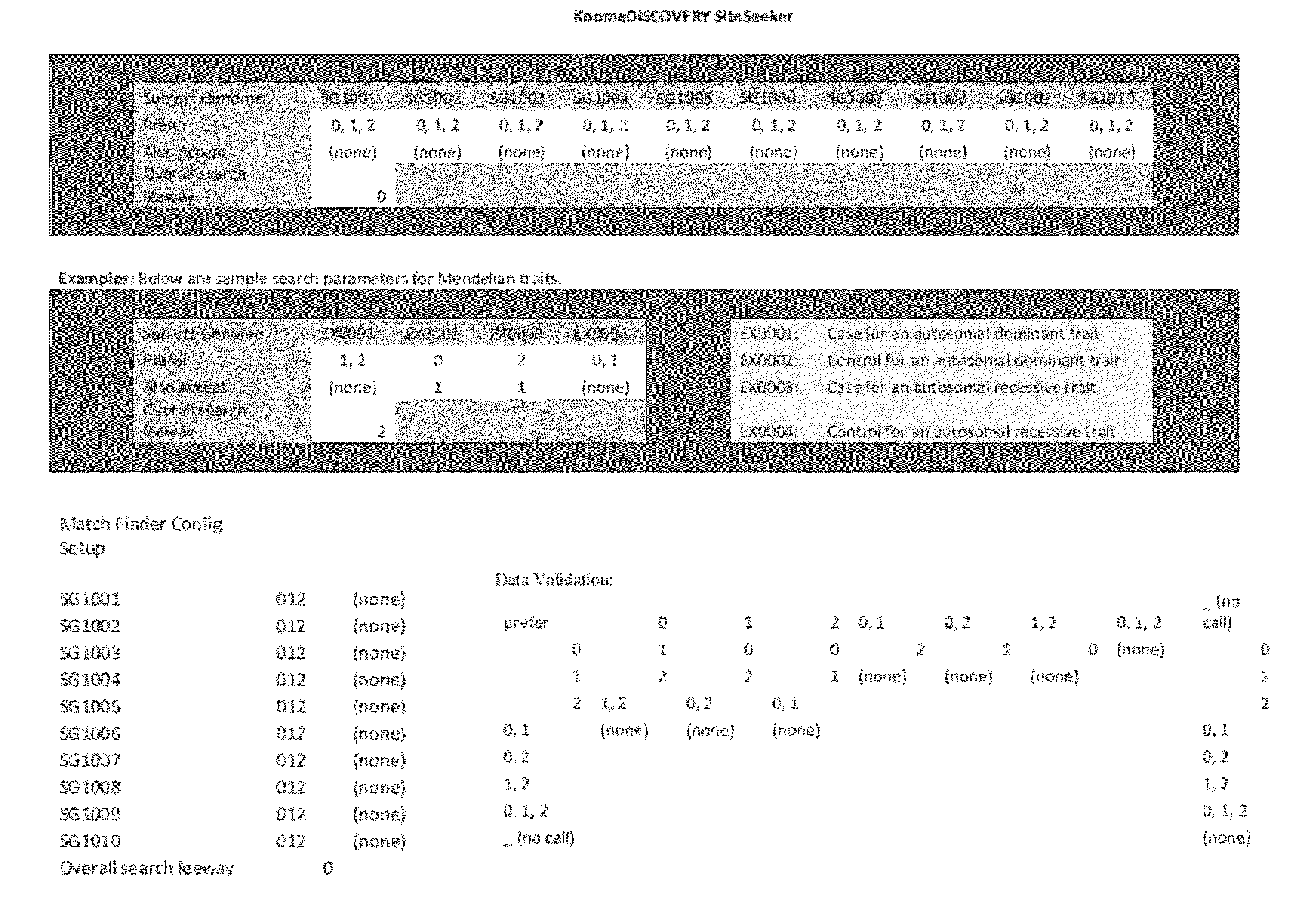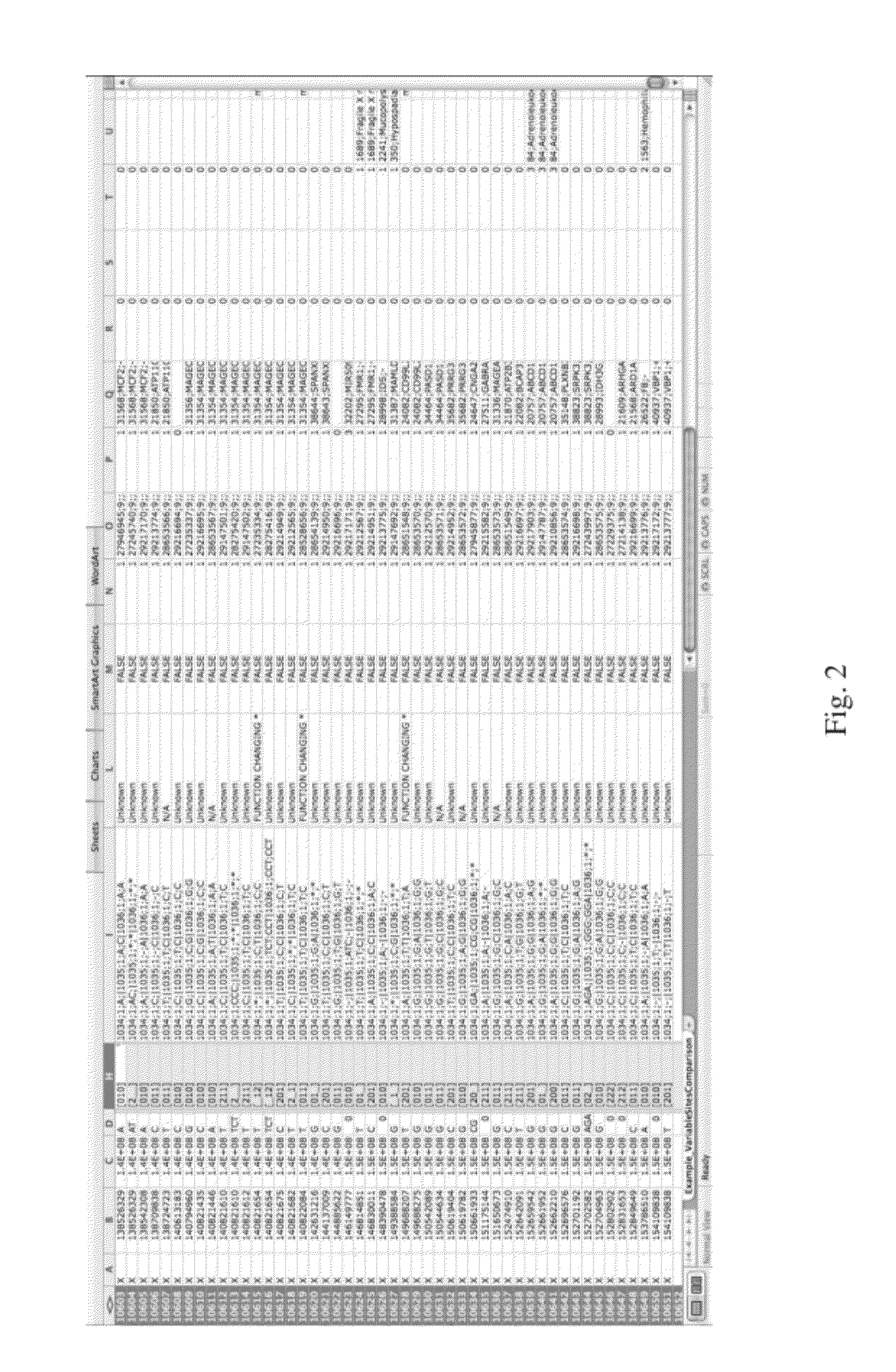Methods and Apparatus for Assigning a Meaningful Numeric Value to Genomic Variants, and Searching and Assessing Same
- Summary
- Abstract
- Description
- Claims
- Application Information
AI Technical Summary
Benefits of technology
Problems solved by technology
Method used
Image
Examples
case 1
) Finding a Recessive Disease Allele in a Small Kindred
[0035]Assume the diff pattern represents five subject genomes, respectively from two healthy parents, a healthy child, and two sick children. A researcher looking for a recessive disease-causing variant would search first for sites with diff pattern [11022] or [11122], and second for sites with similar patterns containing at least one underscore (‘_’) character, e.g., [1—022], meaning that the variant(s) carried at the site in the genome in question were not reliably called during sequencing.
case 2
) Finding a Dominant Disease Allele in an Extended Kindred
[0036]Assume the diff pattern represents four subject genomes, respectively from a sick parent, a sick child, a healthy child, and a sick first cousin of the parent. A researcher looking for a novel dominant disease-causing variant would search first for sites with novel variants and diff patterns [1101]; second for sites with similar patterns containing at least one underscore (‘_’) character, e.g., [1—01], meaning that the variant(s) carried at the site in the genome in question were not reliably called during sequencing; and third for sites with other patterns similar to the expected pattern (allowing for sequencing errors, genetic heterogeneity of disease etiology, incomplete penetrance, poor phenotyping, and other such error components).
case 3
) Finding Loss of Heterozygosity in a Tumor
[0037]Assume the diff pattern represents two subject genomes, respectively from a tumor and other tissue from the same cancer patient. A researcher looking for sites where the tumor may have lost heterozygosity (by losing or gaining one or more copies of a site of the genome, as the tumor cells divided and spread) would look mainly for sites with diff pattern [10] or [12]—and would pay special attention to spatial clusters of such sites (as defined by chromosome / position information in the file).
[0038]Also, the present invention can use a sophisticated graphical user interface for users to search for patterns. Additionally, searches for closely related patterns can be carried out. For example, using the character ‘+’ to mean ‘any positive number, i.e., 1 or 2’ (as in, search for [111+] to mean search for [1111] or [1112]); the character ‘b’ to mean ‘any binary digit, i.e., 0 or 1’; ‘e’ to mean ‘any even digit, i.e., 0 or 2’; etc. Alternativ...
PUM
 Login to View More
Login to View More Abstract
Description
Claims
Application Information
 Login to View More
Login to View More - R&D
- Intellectual Property
- Life Sciences
- Materials
- Tech Scout
- Unparalleled Data Quality
- Higher Quality Content
- 60% Fewer Hallucinations
Browse by: Latest US Patents, China's latest patents, Technical Efficacy Thesaurus, Application Domain, Technology Topic, Popular Technical Reports.
© 2025 PatSnap. All rights reserved.Legal|Privacy policy|Modern Slavery Act Transparency Statement|Sitemap|About US| Contact US: help@patsnap.com



